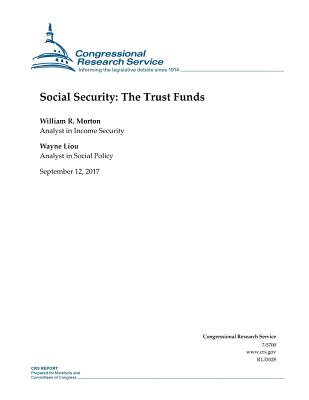You are here
Back to topSocial Security: The Trust Funds (Paperback)
$13.74
This item is not available this time
This item is not available this time
Description
The Social Security program pays monthly cash benefits to retired or disabled workers and their family members and to the family members of deceased workers. Program income and outgo are accounted for in two separate trust funds authorized under Title II of the Social Security Act: the Federal Old-Age and Survivors Insurance (OASI) Trust Fund and the Federal Disability Insurance (DI) Trust Fund. Projections show that the OASI fund will remain solvent until 2035, whereas the DI fund will remain solvent until 2028, meaning that each trust fund can pay benefits scheduled under current law in full and on time up to that point. Following the depletion of trust fund reserves (2028 for DI and 2035 for OASI), continuing income to each fund is projected to cover 93% of DI scheduled benefits and 75% of OASI scheduled benefits. The two trust funds are legally distinct and do not have authority to borrow from each other. However, Congress has authorized the shifting of funds between OASI and DI in the past to address shortfalls in a particular fund. Therefore, this CRS report discusses the operations of the OASI and DI trust funds on a combined basis, referring to them collectively as the Social Security trust funds. On a combined basis, the trust funds are projected to remain solvent until 2034. Following depletion of combined trust fund reserves at that point, continuing income is projected to cover 77% of scheduled benefits. Social Security is financed by payroll taxes paid by covered workers and their employers, federal income taxes paid by some beneficiaries on a portion of their benefits, and interest income from the Social Security trust fund investments. Social Security tax revenues are invested in U.S. government securities (special issues) held by the trust funds, and these securities earn interest. The tax revenues exchanged for the U.S. government securities are deposited into the General Fund of the Treasury and are indistinguishable from revenues in the General Fund that come from other sources. Because the assets held by the trust funds are U.S. government securities, the trust fund balance represents the amount of money owed to the Social Security trust funds by the General Fund of the Treasury. Funds needed to pay Social Security benefits and administrative expenses come from the redemption or sale of U.S. government securities held by the trust funds. The Social Security trust funds represent funds dedicated to pay current and future Social Security benefits. However, it is useful to view the trust funds in two ways: (1) as an internal federal accounting concept and (2) as the accumulated holdings of the Social Security program. By law, Social Security tax revenues must be invested in U.S. government obligations (debt instruments of the U.S. government). The accumulated holdings of U.S. government obligations are often viewed as being similar to assets held by any other trust on behalf of the beneficiaries. However, the holdings of the Social Security trust funds differ from those of private trusts because (1) the types of investments the trust funds may hold are limited and (2) the U.S. government is both the buyer and seller of the investments. This report covers how the Social Security program is financed and how the Social Security trust funds work.
